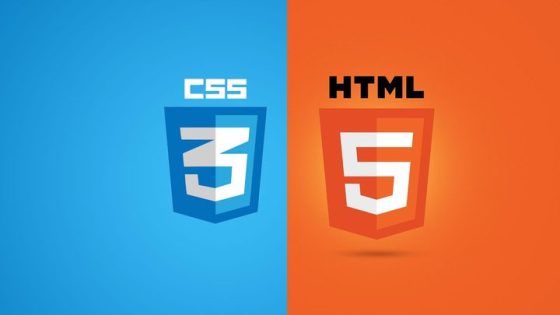Introduction to HTML and CSS Synergy
Creating a visually appealing and structurally sound article using HTML and CSS involves a meticulous blend of semantic HTML elements and robust CSS styling. This combination ensures both functionality and aesthetic appeal, catering to modern web standards and enhancing user experience
Structural Foundation: HTML
The backbone of any web article is HTML. Using semantic tags like `<header>`, `<article>`, `<section>`, and `<footer>` not only provides clarity but also improves SEO and accessibility. Here’s a basic structure:
“`html
<!DOCTYPE html>
<html lang=”en”>
<head>
<meta charset=”UTF-8″>
<meta name=”viewport” content=”width=device-width, initial-scale=1.0″>
<title>Simple Article Design</title>
<link rel=”stylesheet” href=”styles.css”>
</head>
<body>
<header>
<h1>Article Title</h1>
<p>Subtitle or tagline</p>
</header>
<article>
<section>
<h2>Section Title</h2>
<p>Content for the section…</p>
</section>
<section>
<h2>Another Section</h2>
<p>More content…</p>
</section>
</article>
<footer>
<p>Author information and publication date</p>
</footer>
</body>
</html>
“`
Aesthetic Enhancement: CSS
To transform the basic HTML into a visually pleasing layout, CSS is employed. Styling involves defining typography, layout, spacing, and colors to create an engaging reader experience.
“`css
body {
font-family: Arial, sans-serif;
line-height: 1.6;
margin: 0;
padding: 0;
background-color: #f4f4f4;
}
header {
background: #333;
color: #fff;
padding: 1rem 0;
text-align: center;
}
header h1 {
margin: 0;
}
header p {
margin: 0;
font-size: 1.2rem;
}
article {
max-width: 800px;
margin: 2rem auto;
padding: 1rem;
background: #fff;
box-shadow: 0 0 10px rgba(0, 0, 0, 0.1);
}
article section {
margin-bottom: 2rem;
}
footer {
text-align: center;
padding: 1rem 0;
background: #333;
color: #fff;
}
“`
The architecture of a web page is a complex tapestry how ?
woven from diverse components each contributing to the overall aesthetic and functionality of the site. While the unique elements of each page are dictated by the specific needs and goals of the website, certain structural conventions have emerged as universal standards. These conventions provide a familiar framework, ensuring a coherent and user-friendly experience.
Consider the `<header>`, a pivotal element that encapsulates the initial information about the web page. This might include the site’s title, logo, and primary navigation links, serving as the user’s first point of interaction. Contrastingly, the `<footer>` anchors the page, often containing contact details, privacy policies, and supplementary navigation links.
Navigating through the page, the `<nav>` tag delineates the navigation menu, an essential guidepost that directs users to various sections of the site. Meanwhile, the `<article>` tag is employed to enclose a distinct set of information, functioning as a standalone block of content. Within an article, the `<section>` tag further organizes the content, dividing it into meaningful segments that enhance readability and structure.
An often-overlooked element is the `<aside>`, which houses sidebar content. This can range from related links and advertisements to additional information, offering a richer, more layered user experience.
Optimizing the loading time of these assets is crucial for maintaining an efficient and user-friendly website. One effective strategy is CDN hosting. A Content Delivery Network (CDN) employs a network of geographically distributed servers to minimize latency, ensuring that users receive content swiftly and efficiently. Additionally, file compression techniques can significantly reduce the size of assets, decreasing the data transfer required for loading.
File concatenation is another tactic, merging multiple files into a single file to reduce the number of HTTP requests. This, coupled with minifying scripts—which strips unnecessary characters from JS and CSS files—can drastically reduce overall file sizes. Parallel downloads further enhance load times by distributing assets across multiple subdomains, circumventing the download limit imposed by modern browsers.
Moreover, lazy loading defers the loading of non-essential assets until they are needed, preventing unnecessary data transfer and speeding up initial load times.
HTML also boasts a variety of formatting tags, each with a specific purpose. The `<b>` tag renders text bold, adding emphasis without semantic weight, whereas the `<i>` tag italicizes text for stylistic distinction. In contrast, the `<em>` tag not only italicizes text but also conveys semantic importance.
To adjust text size, the `<big>` and `<small>` tags increase or decrease font size by one unit, respectively. The `<sub>` and `<sup>` tags format text as subscript and superscript, which is useful for chemical formulas and mathematical expressions. The `<del>` tag strikes through text, indicating deletions, while `<strong>` marks text as important, often rendering it bold for emphasis.
Highlighting text can be achieved with the `<mark>` tag, which visually marks text as noteworthy. The `<ins>` tag, on the other hand, signifies inserted text, often displayed with an underline.
In conclusion, the intricacies of web page design lie in the balance between structural conventions and optimization techniques. By leveraging these elements effectively, one can create web pages that are not only aesthetically pleasing and user-friendly but also performant and efficient






Leave a Reply